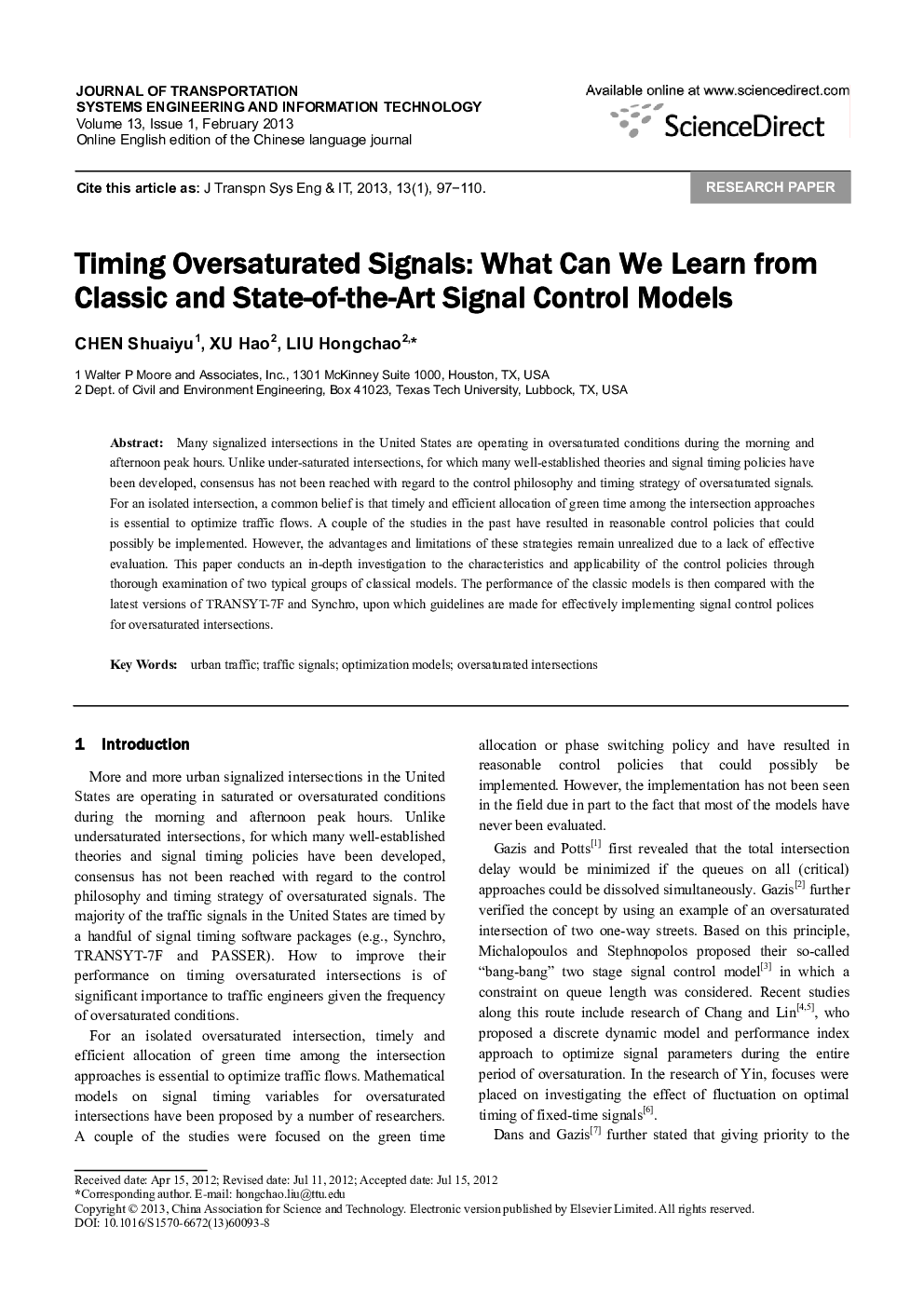| Article ID | Journal | Published Year | Pages | File Type |
|---|---|---|---|---|
| 108457 | Journal of Transportation Systems Engineering and Information Technology | 2013 | 14 Pages |
Many signalized intersections in the United States are operating in oversaturated conditions during the morning and afternoon peak hours. Unlike under-saturated intersections, for which many well-established theories and signal timing policies have been developed, consensus has not been reached with regard to the control philosophy and timing strategy of oversaturated signals. For an isolated intersection, a common belief is that timely and efficient allocation of green time among the intersection approaches is essential to optimize traffic flows. A couple of the studies in the past have resulted in reasonable control policies that could possibly be implemented. However, the advantages and limitations of these strategies remain unrealized due to a lack of effective evaluation. This paper conducts an in-depth investigation to the characteristics and applicability of the control policies through thorough examination of two typical groups of classical models. The performance of the classic models is then compared with the latest versions of TRANSYT-7F and Synchro, upon which guidelines are made for effectively implementing signal control polices for oversaturated intersections.
